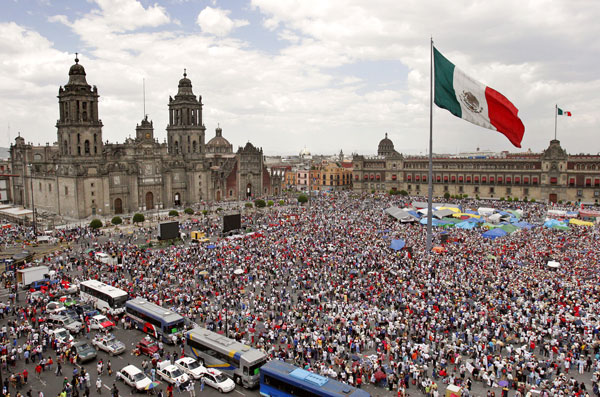Mexico in Focus
Mexico in Focus
Growing Power at the Grassroots Level
In Mexico, a country of nearly 109 million people, most Mexicans have historically made their living as farmers. Farm families began losing their jobs to huge export-oriented corporate farms with their technology, automation and industrial control of land. Many displaced farmers, largely indigenous people, were forced to migrate north to find work. Some traveled to the U.S.; others went to work along the U.S. - Mexico border, in what is designated as a "free trade zone," where there are low or no taxes and fewer government regulations apply.
In response to these changing conditions, women began to organize locally to try to preserve a way of life and ensure a decent standard of living for themselves and their communities. They protested policies that would send cheap food out of the country when their own people were starving. They fought for the right to retain land that had been in their families and communities for generations. They argued for the poor and most marginalized of society not to be left behind and instead get a fair share in the gains resulting from increasing trade and economic growth. The result: formidable movements to counteract the powerful force of globalization.
Mexican women have been and are at the forefront of confronting the changing realities of their people due to globalization.
Explore these stories of Mexican women:
- Maquiladoras: Maquiladoras, or factories, crowd the United States-Mexico border, creating what documentary filmmakers have called a Maquilopolis, or "city of factories." This city's residents are largely women. Armed with video cameras, they've captured their own stories of work, family, despair and hope.
- Zapatista Women in Living Color: The Zapatista Army of Liberation fights a non-violent war for human rights. Discover the power of one of their weapons: the paintbrush.
- The Taking of Channel 9: Local women joined forces with striking teachers in Oaxaca to protest lack of adequate funding for education. When they couldn't gain enough attention by banging pots and pans, they took over a TV station and put themselves on the air.
- A Struggle within a Struggle: Commandanta Esther, a leader in the Zapatista movement, says fellow indigenous women face triple discrimination: As women, as poor women, and as poor indigenous women.


